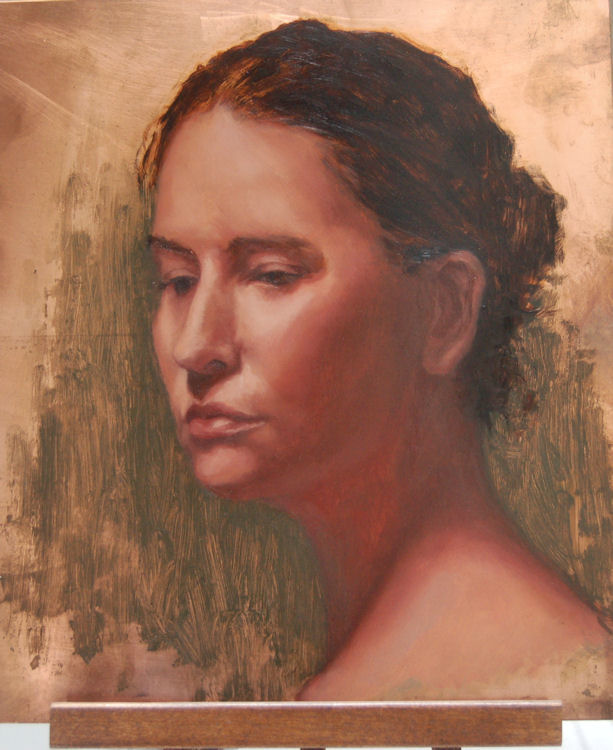|
“Gold is for the mistress—silver for the maid—Copper for the craftsman cunning at his trade."
—Kipling
The phrase “copper for the craftsman” is a telling one. Copper is a versatile material, and that versatility has led to its use by many tradespeople and craftspeople throughout human history. It surrounds us in many applications in life today, just as it has for centuries. It is so pervasive that we almost don’t notice it: it’s in our homes in the form of wiring and plumbing; it’s in our pockets or purses in the form of currency; and it’s in anything that is brass or bronze, since it is an alloy of those metals. Chefs and bakers use copper cookware and baking pans. If you’re familiar with Ottawa, then you’ll also be familiar with the copper roof of Canada’s Parliament buildings as well as the copper roof of the neighbouring Chateau Laurier. But did you know that copper also has centuries-old—and ongoing—role in oil painting?
copper as canvas
Copper plates have been used as a surface for oil paintings for hundreds of years, particularly in Holland. There are several reasons why artists chose to paint on copper. It doesn’t warp, the way that wooden panels can, and it is not sensitive to humidity. Insects don’t eat it. It doesn’t tear or stretch the way that canvas can, and so no re-tensioning is needed. It’s durable, and has a smooth surface that allows for a range of painting techniques.
Here is a portrait study that I painted on a copper plate. I was interested in trying the technique because it fascinates me to follow in the footsteps of artists who have gone before, and try to learn what they knew. Also, it’s just a lot of fun to paint on different surfaces and feel how differently the paint handles on each.
0 Comments
|
A brush with life
I love the smell of art supplies in the morning! This space is to share info about the materials and techniques that I am trying, as well as some pictures of my work in progress. Archives
August 2020
Categories
All
Copyright Jennifer Foster
|

 RSS Feed
RSS Feed